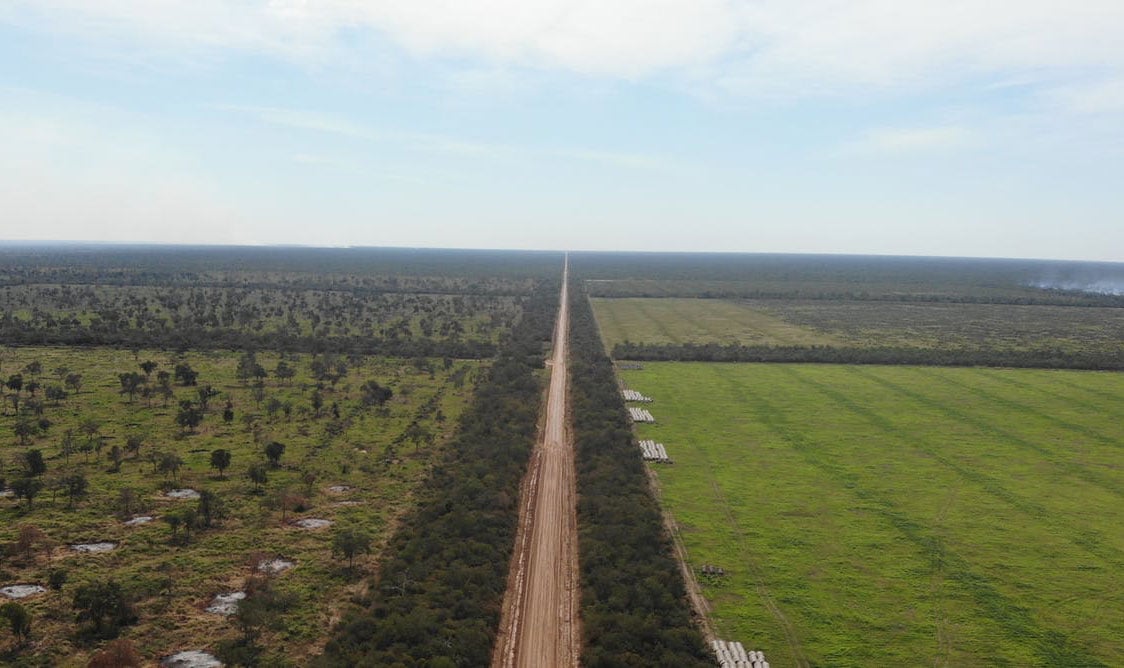The fires raging across the Brazilian Amazon have captured the world’s attention. Meanwhile, South America’s second-largest forest, the Gran Chaco, is disappearing in plain sight.
The Gran Chaco, which spans from Bolivia and Brazil to Paraguay and Argentina, is extremely bio-diverse, with more than 3,400 plant and 900 animal species — including quebracho blanco trees, tapirs and jaguars. It is also home to at least 30 indigenous peoples, including the Ayoreo, some of whom live in voluntary isolation in their historic homelands, as well Mennonite colonies.
Now, due to the some of the fastest deforestation in the world, this once enormous ecosystem may soon be gone outside of protected areas. Since 2001, more than 31,000 square miles of forest were felled to make way for agriculture and cattle ranching in the Gran Chaco.
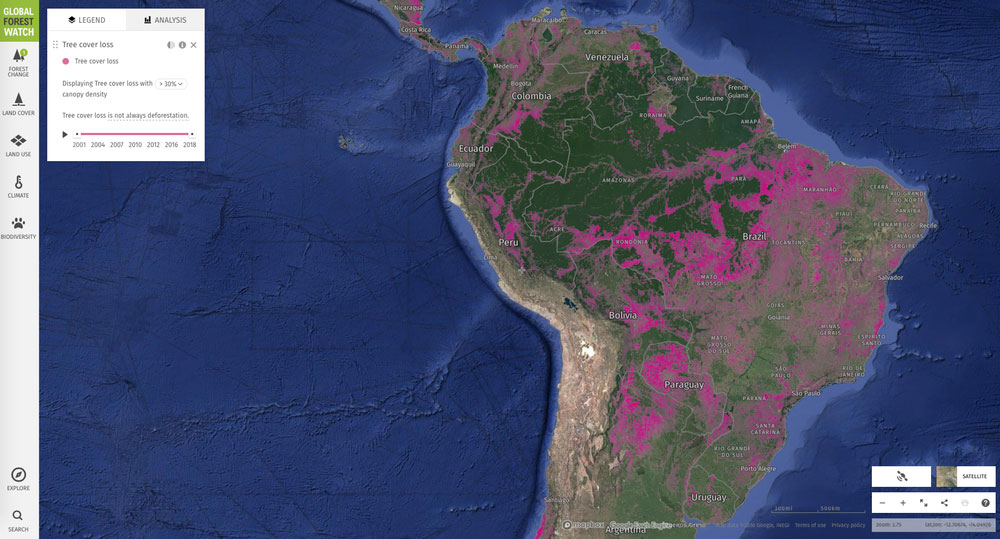
More than half of that deforestation took place in Paraguay, a small South American country of 7 million.
As in the Amazon to the north, cattle ranching and farming are the primary drivers of deforestation in Paraguay’s Gran Chaco.
But beyond beef and soy, the cleared land of the Gran Chaco produces some pretty unexpected stuff, too — everyday products that are exported and sold abroad to consumers who may never know their purchases contribute to the destruction of South America’s second largest forest.
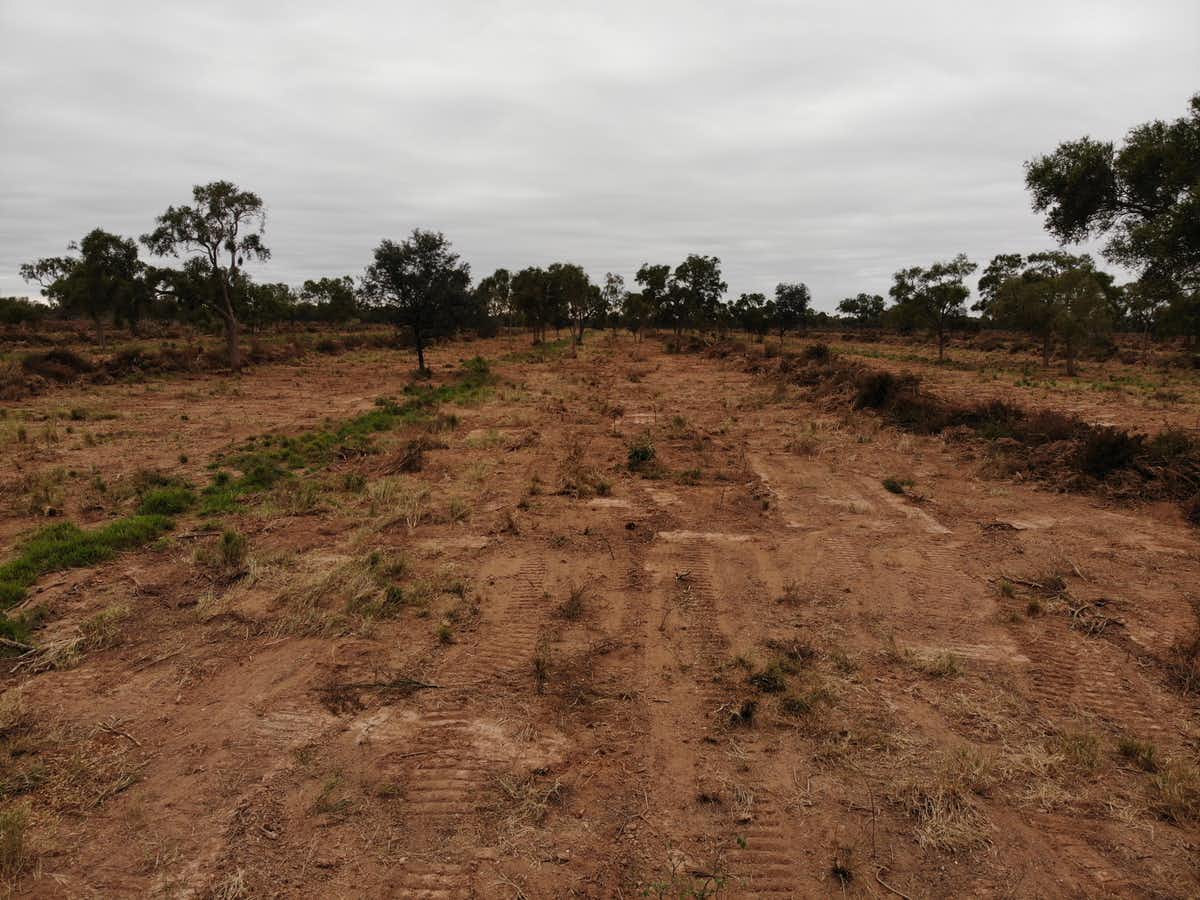
Growing Pains in the Chaco
I have investigated the spread of export-oriented agriculture in Paraguay since 2011. Paraguay, the eighth largest exporter of beef globally, sells 350,000 tons of beef each year to Russia, Israel, Chile and beyond.
There are at least 14 million head of cattle in the Paraguayan Chaco and over 4 million hectares of land devoted to cattle ranching — an area larger than Belgium.
The Paraguayan government hopes to climb into the top five of global beef exporters in the next 10 years. To meet that goal, ranchers will need more land — a lot of it — since Paraguay’s beef industry is based on grazing, rather than the feedlot model prevalent in the U.S.
To clear forest land for grazing, both legally and illegally, Paraguayan cattle ranchers use what’s called “chaining.” That means leveling the forest with tractors that drag heavy chains. Then they burn the fallen trees.
Increasingly, some Paraguayan ranchers are realizing that there’s money to be made off those felled trees, too. Rather than just incinerating the wood in their fields, they turn it into carbón — or charcoal, in English.
Across the Paraguayan Chaco, large brick kilns located off of main roads slowly bake the wood cleared from nearby forests, transforming it into charcoal that fuels weekend cookouts worldwide.
That charcoal is then stacked high on trucks that carry it to Paraguayan exporters, who ship it to Europe, the Middle East and the United States, among other major markets.
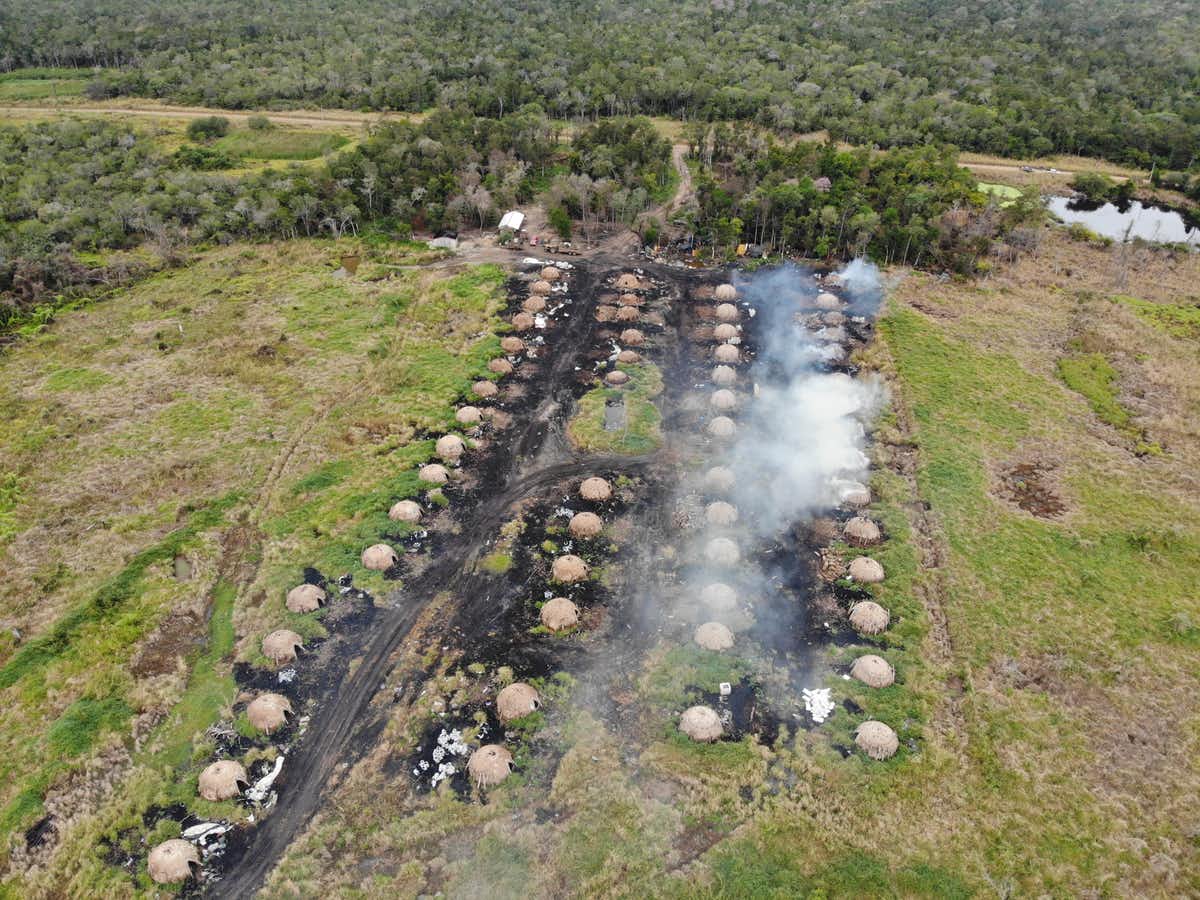
Weekend Cookouts and Luxury Leather
In those places, Paraguayan charcoal is often labeled it as “natural” or “environmentally certified”, suggesting that they are sustainable.
Paraguayan charcoal may be a “natural” product, but it’s hardly environmentally friendly. That’s because making and selling charcoal from recently cut trees — trees that previously went to waste — makes deforestation more profitable.
As a result, purchases of this product indirectly contribute to the deforestation of the Chaco, sometimes turning environmentally minded consumers into unknowing accomplices in the decimation of South America’s second-largest forest.
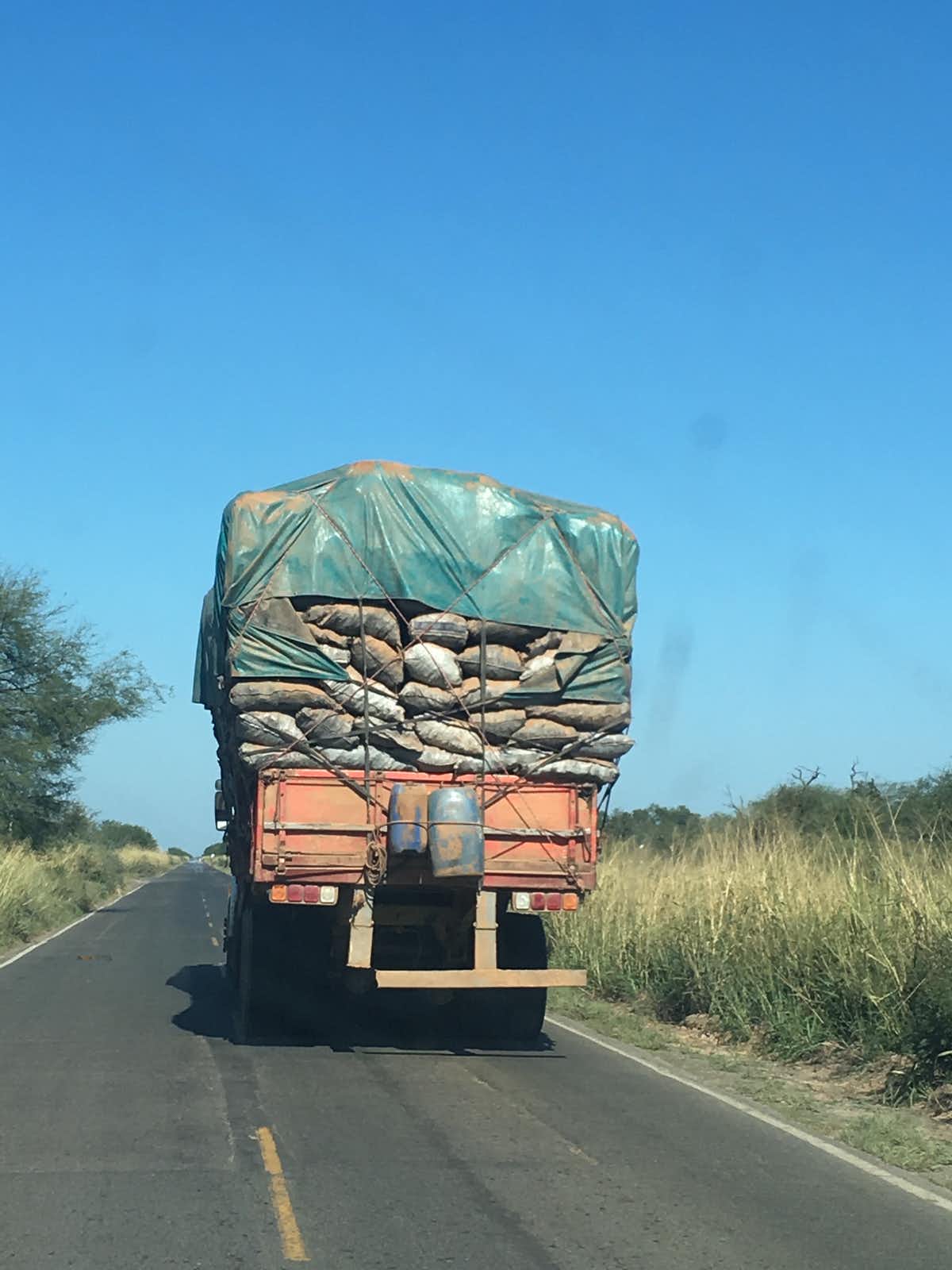
A similar problem arises with another Chaco good that’s sold far and wide: leather.
Paraguay exported nearly 9 million pounds of leather — a byproduct of its beef industry — last year.
Paraguayan leather is refined and used in numerous industries across the world, particularly in Europe.
Car companies BMW, Citroën, Peugeot, Renault, Porsche and Ferrari all use leather from the Chaco to wrap everything from seats to steering wheels.
Playing a pickup game of soccer this weekend? Your shoes could be made of the same stuff.
Leather and charcoal don’t just make environmental degradation of the Paraguayan Chaco forest more profitable — sometimes, they are produced using forced labor.
According to recent complaints filed with the Paraguayan attorney general’s office and labor department, some Chaco cattle ranches exploit indigenous people, paying extremely low wages for jobs like fence building, clearing land or herding cattle. Some workers must buy food from expensive ranch stores using systems of credit that entrap them in debt.
A September 2018 United Nations report on contemporary forms of slavery in Paraguay shows that forced labor on Chaco cattle ranches and related industries is slowly improving due to increased compliance with labor laws, but affirms that it remains prevalent.
Going, Going …
It can be overwhelming, I know, for consumers to investigate whether their leather, say, or the charcoal for their BBQ is ethically sourced.
There are so many worrying environmental problems in the world, and global supply chains are incredibly complex. So for consumers living far from the places that produce the goods they buy — even very conscientious ones — it is easier to focus on extraordinary events like the Amazon fires than to contemplate the unintended consequences of a weekend cookout.
But commonplace consumption habits matter when it comes to global environmental health. The things we buy may support the harmful underlying practices and industries that lead to acute crises like Amazonian fires or generalized problems driven by climate change.
That said, there’s no “out of sight, out of mind” when it comes to social and environmental justice. If South America’s great Gran Chaco forest continues to be leveled at the current rates, it will recede before most people even knew it existed.
Joel E. Correia is a member of the American Association of Geographers. The association is a funding partner of The Conversation US. In addition to university funding, Joel E. Correia has received support from the National Science Foundation and Fulbright Hays to conduct research in Paraguay’s Chaco. He is also a member of the American Association of Geographers, a Conversation US member organization. This article represents the author’s view, not that of the aforementioned funders.
We’re not backing down in the face of Trump’s threats.
As Donald Trump is inaugurated a second time, independent media organizations are faced with urgent mandates: Tell the truth more loudly than ever before. Do that work even as our standard modes of distribution (such as social media platforms) are being manipulated and curtailed by forces of fascist repression and ruthless capitalism. Do that work even as journalism and journalists face targeted attacks, including from the government itself. And do that work in community, never forgetting that we’re not shouting into a faceless void – we’re reaching out to real people amid a life-threatening political climate.
Our task is formidable, and it requires us to ground ourselves in our principles, remind ourselves of our utility, dig in and commit.
As a dizzying number of corporate news organizations – either through need or greed – rush to implement new ways to further monetize their content, and others acquiesce to Trump’s wishes, now is a time for movement media-makers to double down on community-first models.
At Truthout, we are reaffirming our commitments on this front: We won’t run ads or have a paywall because we believe that everyone should have access to information, and that access should exist without barriers and free of distractions from craven corporate interests. We recognize the implications for democracy when information-seekers click a link only to find the article trapped behind a paywall or buried on a page with dozens of invasive ads. The laws of capitalism dictate an unending increase in monetization, and much of the media simply follows those laws. Truthout and many of our peers are dedicating ourselves to following other paths – a commitment which feels vital in a moment when corporations are evermore overtly embedded in government.
Over 80 percent of Truthout‘s funding comes from small individual donations from our community of readers, and the remaining 20 percent comes from a handful of social justice-oriented foundations. Over a third of our total budget is supported by recurring monthly donors, many of whom give because they want to help us keep Truthout barrier-free for everyone.
You can help by giving today. Whether you can make a small monthly donation or a larger gift, Truthout only works with your support.
